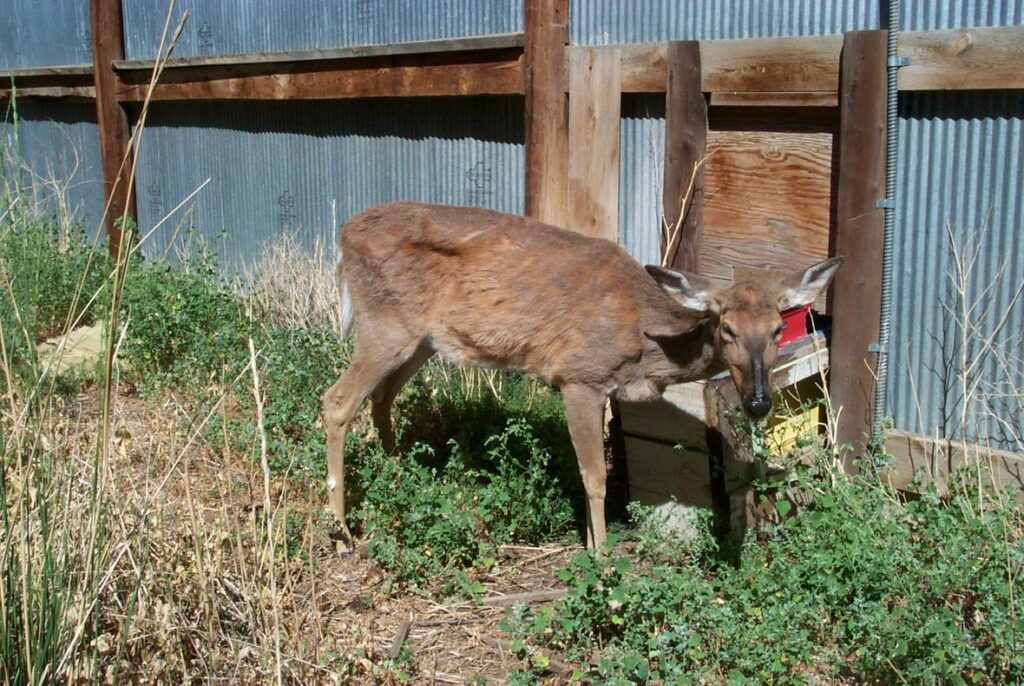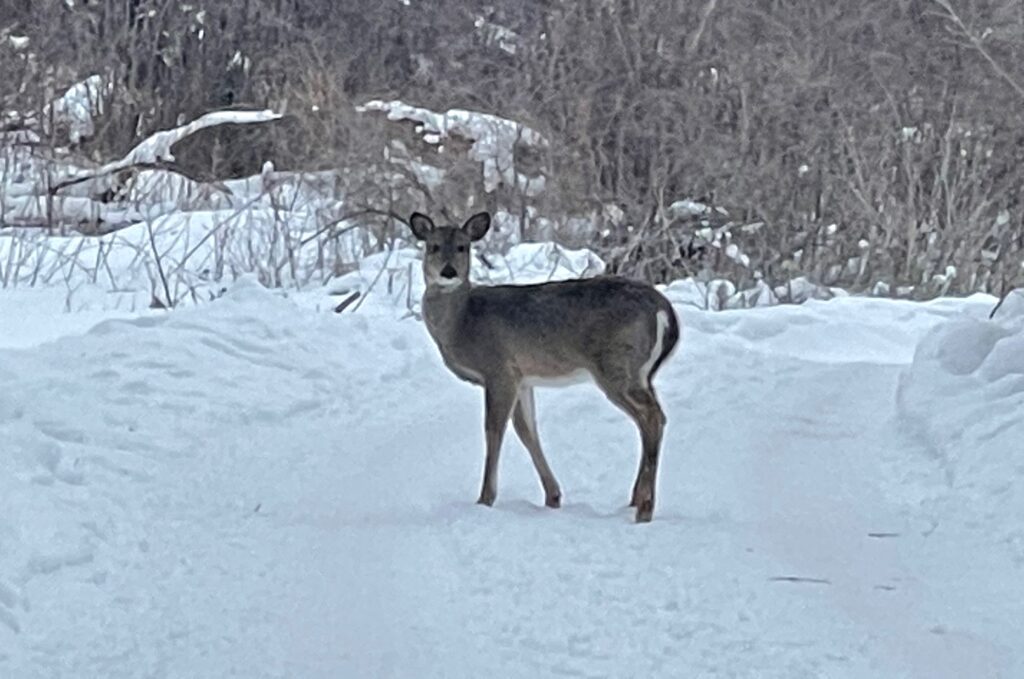Winter Deer and Disease

Deer suffering from chronic wasting disease. Photo by Terry Kreeger, Wyoming Game and Fish and Chronic Wasting Disease Alliance. Public domain.
Iowa is in a good location regarding the effects of winter on its deer population. Further north, above the Canadian border, winters are sufficiently long and severe to occasionally kill part of the herd. South of us in Arkansas, winters are sufficiently mild that a variety of parasites continue their life cycles year round and stunt deer. Where good habitat is available, Iowa winters rarely kill very many deer, but the disease situation is changing.
Yes, deer are hungry and you may be tempted to put out hay bales or something else to feed them. But the purpose of my note today is to mention that there can be worse problems for deer than being hungry. As soon as you begin feeding deer, the word goes out and your guest list may quickly go from a couple to dozens of them. You may soon be running a little feedlot, with the disease problems that arise from overcrowding and poor sanitation. One of the worst of these is chronic wasting disease. There is substantial literature on the affliction because it is so nasty, is difficult to manage, is moving through Iowa and may be transferable to people.
The good news is that in most Iowa winters around here, hungry deer are not necessarily starving deer, and this year seems to be a good example, at least as of mid-February. Deer can carry spare fat along their back and especially on their rump outside their muscles and just beneath the skin. If autumn is reasonable, and they eat well, especially acorns and waste corn, they can go into winter with 1-3 inches of firm lard on their rump, which gives them a well-rounded appearance.
Last December and January were not harsh and our local deer went into February with some of their back and rump fat still intact, giving them smooth and rounded body contours. Deer that lose 30 percent of their body weight will die, and by this stage they look scrawny and ragged, which I am not seeing in mid-February in Johnson County. Also, our younger deer are still somewhat playful and occasionally run instead of walk, another indication of having energy to spare.
When you go to your doctor’s office, your diagnosis begins as soon as the staff notices you come shuffling in. I suggest that you view your late-winter deer observations the same way – Bright eyed? Alert? Standing tall? Smooth fur? Rounded contours? Bouncy walk? Looking good usually means that the patient is doing OK and intervention is not needed.



